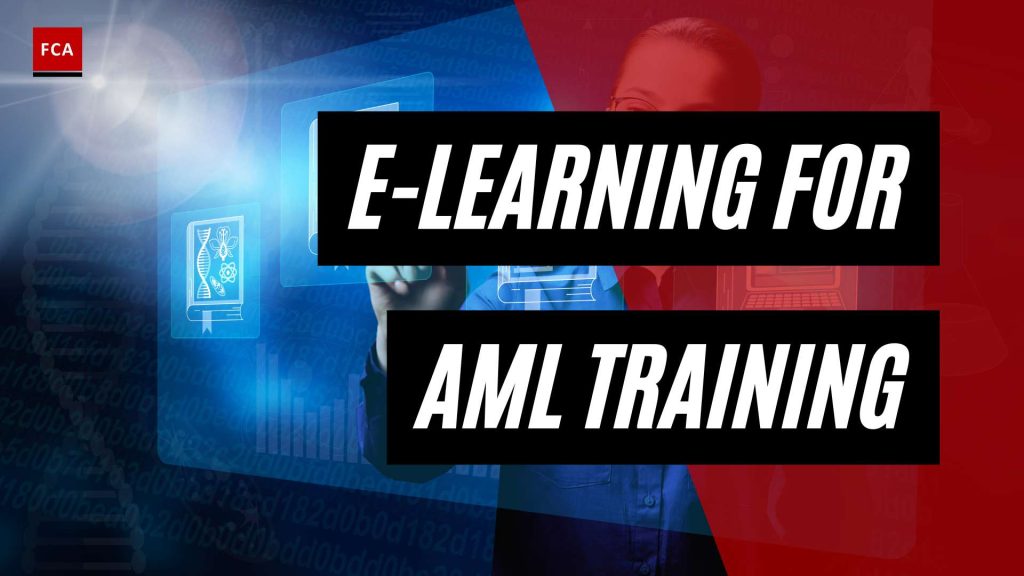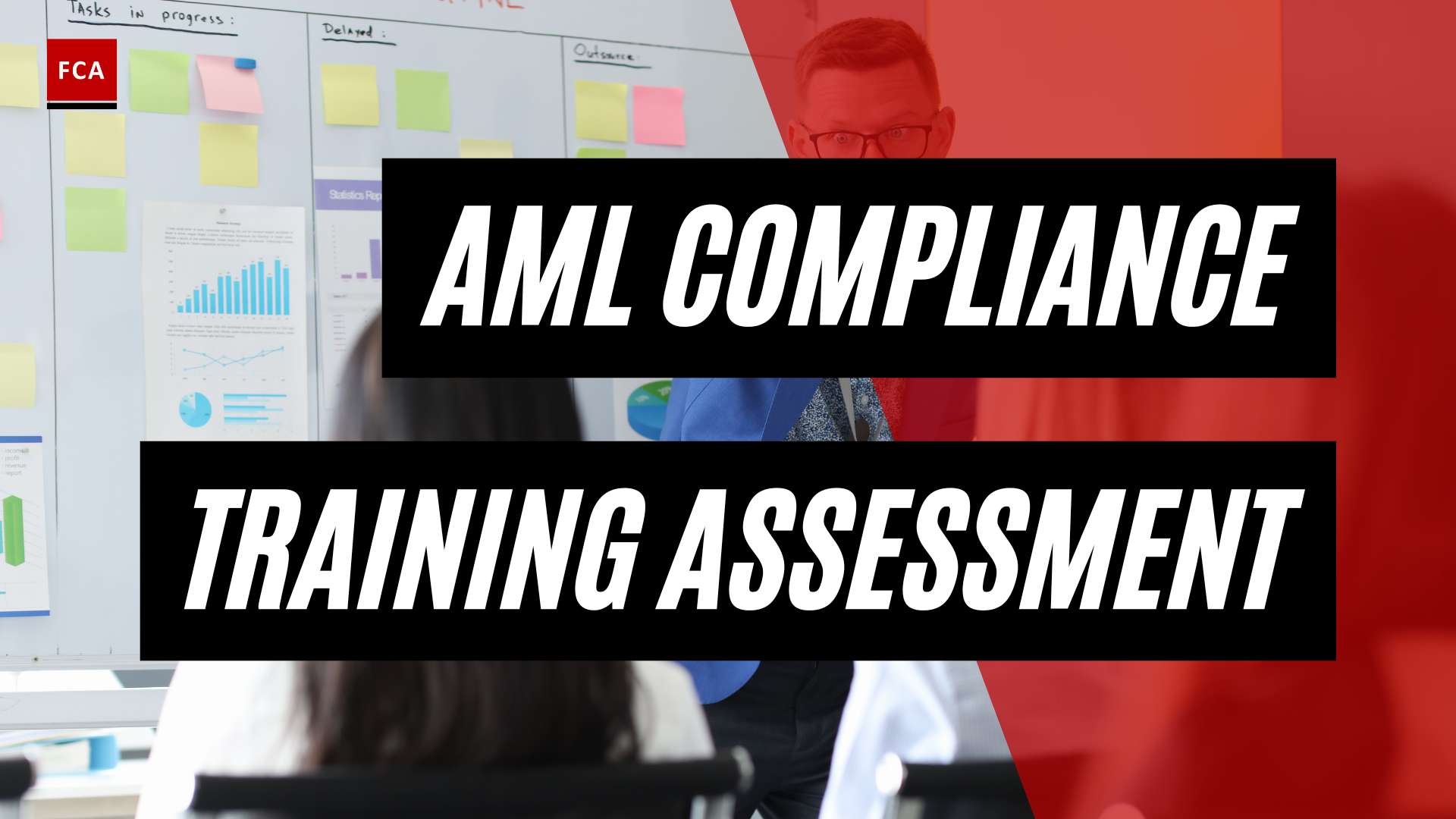The Importance of AML Training
To combat the ever-evolving landscape of financial crime, including money laundering and terrorist financing, organizations are recognizing the vital role of Anti-Money Laundering (AML) training. AML training equips professionals working in compliance, risk management, and anti-financial crime with the knowledge and skills necessary to identify and prevent illicit activities. This section provides an overview of AML training and highlights the regulatory requirements associated with it.
Overview of AML Training
AML training is designed to educate individuals on the concepts, laws, and procedures related to anti-money laundering and financial crime prevention. It aims to enhance their understanding of the risks associated with money laundering, the techniques employed by criminals, and the role they play in ensuring compliance within their organizations.
Through AML training, professionals learn about various topics, including:
- The definition and consequences of money laundering
- Recognizing suspicious activities and red flags
- Customer due diligence and Know Your Customer (KYC) procedures
- Reporting obligations and the role of regulatory bodies
- The legal and ethical responsibilities of individuals and organizations
By providing a comprehensive understanding of these topics, AML training empowers professionals to identify potential risks, implement effective controls, and contribute to a culture of compliance within their organizations.
Regulatory Requirements for AML Training
Regulatory bodies, such as the Financial Industry Regulatory Authority (FINRA) and the European Union (EU), have established guidelines and requirements for AML training to ensure that financial institutions and professionals are equipped to combat money laundering and related financial crimes.
For example, FINRA requires registered representatives to fulfill Continuing Education requirements, including AML training, through their FinPro portal (FINRA). Similarly, the EU’s 5th AML Directive introduced additional requirements for AML training, including mandatory training for the management of financial institutions (Financial Crime Academy).
Meeting these regulatory requirements is crucial to maintaining compliance and safeguarding against financial crimes. Organizations must ensure that their employees receive regular and comprehensive AML training to stay up-to-date with the latest regulations and best practices.
By implementing effective AML training programs, organizations demonstrate their commitment to preventing money laundering and protecting their business, customers, and the integrity of the financial system.
As the demands of the financial industry continue to evolve, the adoption of e-learning and digital tools for AML training has become increasingly prevalent. In the following sections, we will explore the benefits of e-learning for AML training, the key features of effective e-learning platforms, and best practices for implementing these training methods.
Benefits of E-Learning for AML Training
When it comes to Anti-Money Laundering (AML) training, utilizing e-learning platforms can offer numerous benefits for both financial institutions and their employees. In this section, we will explore the advantages of e-learning in terms of cost-effectiveness, flexibility and convenience, as well as scalability and tracking.
Cost-Effectiveness of E-Learning
E-learning for AML training provides a cost-effective solution for financial institutions. Traditional in-person training sessions often come with significant expenses such as travel costs, dedicated training facilities, and the need for trainers. By transitioning to e-learning, these costs can be minimized or eliminated altogether. Financial institutions can allocate their resources more efficiently, ensuring compliance with AML regulations while reducing overall training expenses.
Flexibility and Convenience of E-Learning
E-learning offers unparalleled flexibility and convenience for AML training. Employees in the financial sector can access training materials anytime and anywhere with an internet connection, making it particularly convenient for international teams and employees in remote locations (Financial Crime Academy). With the ability to learn at their own pace, professionals can balance their work commitments and personal responsibilities more effectively. This flexibility allows for a seamless integration of training into their busy schedules.
Scalability and Tracking of E-Learning
E-learning platforms provide the scalability necessary to meet the training needs of financial institutions of all sizes. Whether there are a few employees or a large workforce, e-learning can accommodate the training requirements. E-learning also allows financial institutions to provide consistent training content to employees across different locations and time zones, ensuring a standardized understanding of AML regulations and procedures.
Moreover, e-learning platforms offer robust tracking and reporting features, enabling organizations to monitor the progress of their employees’ training. This tracking capability ensures that employees complete the required training modules and can provide evidence of compliance if needed. The ability to track and document training progress is essential for regulatory audits and demonstrating a commitment to AML compliance.
By harnessing the benefits of e-learning in AML training, financial institutions can maximize compliance while optimizing their training resources. The cost-effectiveness, flexibility, convenience, scalability, and tracking capabilities of e-learning platforms make them a valuable tool for enhancing AML knowledge and skills. To explore different e-learning options for AML training, consider aml training videos, aml compliance training online, aml training for employees, aml training for accountants, aml training software, aml training webinars, aml training solutions, aml training resources, and online aml training programs.
Key Features of Effective E-Learning Platforms
When it comes to AML training, e-learning platforms offer numerous advantages over traditional training methods. To ensure the effectiveness of e-learning for AML training, it is essential to consider key features that make these platforms effective and impactful. Here are three important features to look for in an e-learning platform:
Interactive Elements for Engaging Learning
Effective e-learning platforms for AML training provide interactive features like quizzes, simulations, and case studies to engage learners and deepen their understanding of AML concepts and practices (Financial Crime Academy). These interactive elements allow learners to actively participate in the training process, making the learning experience more engaging and memorable.
By incorporating interactive elements, learners are challenged to apply their knowledge and make decisions in realistic scenarios. This helps them develop critical thinking skills and practical problem-solving abilities, which are vital in the context of anti-money laundering. Additionally, interactive elements create opportunities for immediate feedback, enabling learners to identify areas for improvement and reinforce their understanding of AML principles.
Regular Updates and Compliance with Regulations
AML regulations and best practices are constantly evolving. Therefore, it is crucial for e-learning platforms to provide regular updates to keep the training content current and aligned with the latest industry standards and regulatory requirements. Compliance with regulations is of utmost importance in the financial sector, and e-learning platforms should reflect this commitment.
By ensuring regular updates, organizations can be confident that their employees receive the most up-to-date information and training on AML practices. This helps maintain compliance and ensures that employees are equipped with the knowledge and skills necessary to mitigate the risks associated with money laundering and financial crime.
Accessibility and Standardization Across Locations
One of the significant advantages of e-learning for AML training is its accessibility. Employees in the financial sector can access training anytime, anywhere with an internet connection, making it convenient for international teams and employees in remote locations. E-learning platforms offer flexibility, allowing learners to progress through the training at their own pace and revisit materials as needed.
Furthermore, e-learning platforms enable financial institutions to provide consistent training content to employees across different locations and time zones, ensuring a standardized understanding of AML regulations and procedures. This standardization is essential for maintaining compliance and ensuring a cohesive approach to AML practices throughout the organization.
By incorporating these key features into e-learning platforms, organizations can maximize the potential of e-learning for AML training. The interactive elements foster engagement and active participation, while regular updates and compliance with regulations ensure the training remains relevant and effective. Additionally, the accessibility and standardization offered by e-learning platforms enable organizations to provide consistent, high-quality training to employees regardless of their location, contributing to a strong culture of compliance and risk management.
E-Learning for AML Training in the European Union
In the European Union (EU), the importance of Anti-Money Laundering (AML) training is well-recognized. Financial institutions are required to provide AML training to their employees to ensure compliance with regulations and mitigate the risks associated with money laundering and terrorist financing. With the advancements in technology, e-learning has emerged as an effective and efficient method for delivering AML training.
AML Training Requirements in the EU
Under the 4th AML Directive, many financial institutions in the EU are legally obligated to provide AML training to their employees. The directive emphasizes the need for training programs that cover the legal and regulatory framework, risk awareness, customer due diligence, and reporting obligations.
To enhance the effectiveness of AML training, the 5th AML Directive introduced additional requirements, including mandatory training for the management of financial institutions. This directive emphasizes the importance of ongoing training and the need for organizations to stay up-to-date with AML regulations and emerging risks.
Meeting Training Requirements with E-Learning
E-learning platforms have become a popular choice for meeting AML training requirements in the EU. These platforms offer several advantages that make them well-suited for delivering effective AML training programs.
One of the key benefits of e-learning is the ability to provide consistent training content to employees across different locations and time zones. This ensures a standardized understanding of AML regulations and procedures, regardless of geographical barriers (Financial Crime Academy). This standardization is essential for promoting a strong compliance culture within financial institutions.
E-learning platforms also offer flexibility in creating customized AML training courses tailored to the specific risks and needs of different departments within a financial institution. This personalized approach can enhance the effectiveness of AML training programs, allowing employees to focus on the areas most relevant to their roles and responsibilities.
Furthermore, e-learning for AML training can help financial institutions reduce training costs associated with traditional in-person sessions. Expenses such as travel, accommodation, and dedicated training facilities can be minimized, while still ensuring regulatory compliance and staff competency (Financial Crime Academy). This cost-effectiveness makes e-learning a viable option for organizations of all sizes.
By leveraging e-learning platforms, financial institutions in the EU can efficiently meet their AML training requirements while effectively educating their employees on AML regulations, risk awareness, and reporting obligations. The accessibility, scalability, and cost-effectiveness of e-learning make it a valuable tool in maximizing compliance and ensuring the integrity of financial systems.
The Role of Online Training in AML Compliance
In the realm of AML compliance, online training plays a crucial role in enhancing skills and knowledge related to anti-money laundering practices. By leveraging e-learning platforms, professionals working in compliance, risk management, anti-money laundering, and anti-financial crime can access comprehensive training materials conveniently and efficiently. This section explores the key benefits of online training for AML compliance: enhancing skills and knowledge, flexibility and self-paced learning, and cost-effectiveness and accessibility.
Enhancing Skills and Knowledge in AML
Online AML training programs provide education on legislation, regulatory guidelines, key risks, and red flags associated with money laundering and terrorist financing activities. It is essential for compliance professionals, financial institutions, and designated non-financial businesses and professions to stay up-to-date with the latest knowledge and skills in AML to combat financial crimes effectively (Financial Crime Academy). Through interactive elements such as quizzes, case studies, and simulations, e-learning platforms enhance engagement and knowledge retention among participants. This approach allows individuals to apply theoretical concepts to real-life scenarios, ensuring a practical understanding of AML processes and improving their ability to identify and mitigate risks.
Flexibility and Self-Paced Learning
One of the significant advantages of AML training online is the flexibility it offers in scheduling. Professionals can access the course materials from anywhere, at any time, allowing for self-paced learning. This feature is particularly beneficial for individuals juggling work commitments and personal responsibilities. The ability to learn at one’s own pace ensures a comfortable and stress-free learning experience, ultimately leading to a better understanding and retention of AML concepts.
Cost-Effectiveness and Accessibility
E-learning courses for AML training often offer the advantage of cost-effectiveness compared to traditional in-person training sessions. The affordability of online training makes quality AML education accessible to a wider range of professionals and organizations. By eliminating the need for travel expenses, venue rentals, and printed materials associated with in-person training, online training solutions contribute to a more cost-efficient approach to AML compliance. Moreover, the accessibility of online training allows organizations to provide consistent and standardized education across their workforce, regardless of geographical locations. This streamlines compliance efforts, creates a unified approach to AML practices, and reduces risks.
By embracing online training for AML compliance, professionals can enhance their skills and knowledge in identifying and preventing financial crimes. The flexibility and self-paced learning provided by e-learning platforms allow for a personalized learning experience. Moreover, the cost-effectiveness and accessibility of online training solutions contribute to a more robust and efficient approach to AML compliance, benefiting both individuals and organizations alike.
Best Practices for Implementing E-Learning for AML Training
To maximize the effectiveness of e-learning for AML training, financial institutions should follow best practices that ensure engagement, progress tracking, and compliance.
Utilizing Interactive Elements for Engagement
One key best practice is to utilize interactive elements within e-learning modules. Incorporating features such as quizzes, case studies, and simulations can enhance engagement and knowledge retention among employees. These interactive elements provide hands-on learning experiences, allowing employees to apply their AML knowledge in real-world scenarios. By actively participating in the learning process, employees are more likely to understand and retain crucial information (SoSafe Awareness).
Tracking and Reporting Progress
Tracking and reporting progress are essential components of effective e-learning for AML training. E-learning platforms should include robust tracking mechanisms that monitor employee progress, completion rates, and assessment scores. This data enables organizations to identify areas of improvement and ensure that employees are meeting the required training standards. By tracking progress, organizations can also demonstrate compliance with regulatory requirements and provide evidence of ongoing training efforts.
Mitigating Risks and Ensuring Compliance
Mitigating risks and ensuring compliance are paramount in AML training. Financial institutions should implement measures to address potential risks associated with financial crimes. E-learning platforms should cover the latest regulatory updates and provide employees with the necessary knowledge and skills to identify and report suspicious activities. By staying up to date with regulatory requirements and integrating them into e-learning modules, organizations can ensure that employees are equipped to handle evolving AML challenges.
Furthermore, organizations should regularly review and update their e-learning content to reflect changes in AML regulations and industry best practices. This ensures that employees receive accurate and relevant information, keeping them aware of emerging risks and the most effective strategies to combat financial crimes.
By implementing these best practices, financial institutions can effectively leverage e-learning for AML training. Interactive elements enhance employee engagement, progress tracking ensures accountability, and compliance measures mitigate risks. E-learning platforms provide the flexibility, scalability, and standardization needed to deliver comprehensive and efficient AML training programs. With these best practices in place, organizations can promote a culture of compliance and empower their employees to combat financial crimes effectively.








